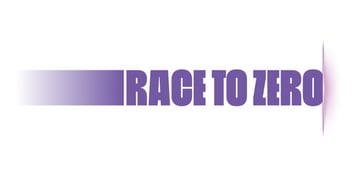How digitisation helped transform one utility's maintenance works

It was 20 December 2019, and in the middle of New Zealand’s capital city of Wellington, a gigantic hole had just opened up in a busy city street.
“The resulting blockage discharged wastewater from three central city wastewater pumping stations into the harbour,” recalled Stephen Molineux, Water Design Manager at WSP New Zealand.
“For the next few months, the CBD was transformed into a construction site as a repair was enacted.”
The cause was a collapsed wastewater tunnel, and it was the catalyst for Wellington Water to undertake an urgent review of its most important assets, with the utility looking first at the assets whose failure would have the biggest impact on their customer service goals.
“Any asset whose value had an unacceptable and extensive impact on the livelihoods of people, the environment, or the time to restore service would be significant, were priorities for inspection,” Molineux said.
Molineux and Associate Structural Engineer Timbi Poon of Brisbane-based consultancy Beca were tasked with assessing the city’s 142 drinking water reservoirs, and the two told delegates at Ozwater’22 how they used digitised inspection workflows to do the job.
“Reservoirs are complex multi-generational assets, and while their failure isn't likely to close down the CBD, they can still impact customers in some very serious ways,” Molineux said.
“Inspection of such complex assets necessitated that an experienced eye was utilised to undertake such assessments, but such experts are short on time and couldn't possibly inspect such a large number of assets.”
The digitised inspection workflows, however, provided junior team members with the tools and support they needed to undertake accurate assessment and ensure a dataset was produced to inform future asset-management decisions.
“When I say digitised inspection workflows, I'm referring to the process of using a mobile inspection app to record information on site and to generate a report,” explained Poon.
“In the case of operationally critical drinking water assets, I’ve learned that understanding the complexities of enabling works can make or break a seemingly simple technical recommendation.”
Poon and Molineux set about developing a suitable digital solution to their problem, and became, in Poon’s words “a little bit obsessed” with creating something that would allow ongoing predictive maintenance of Wellington’s drinking water reservoirs.
To ensure the inspections were carried out correctly, the pair incorporated two key tools into the solution: a visual assessment guideline and an app that asked leading questions and requested photographic input so that senior team members could provide any necessary support.
“While the digital workflow was quite straightforward from an IT perspective, it was far from what would be considered as a tried and tested engineering workflow,” Poon said.
“Building trust in the process was critical to realising that dream of that fully digitised inspection workflow.”
Once the data had been gathered, a technical reviewer edited the assessment with an interactive dashboard that had been designed to maximise aesthetics and usability. The dashboard displays an interactive map showing colour-coded representations of reservoirs with issues, representing the scale of the problem.
“Reviewing and editing live source data was unfamiliar territory for the technical reviewers, who are typically accustomed to bleeding over pages and pages of A4 reports with their trusty red pens,” Poon said.
“Additional effort was required to reassure them that the tech wouldn't fail them.”
The effort seems to have been worth it: Wellington Water is now using the technology to scope future work packages.
Once the system had identified remedial works, it could calculate budget cost, as well as the cost of tendering similar work at portfolio level that would help take advantage of efficiencies in procurement.
However, Poon and Molineux also ensured the system could be used for predictive purposes. That way, it could determine questions such as what works would be needed to be undertaken if a reservoir was taken offline, whether or not to undertake seismic strengthening, and should a particular component be replaced or not.
“If you have a quality data set, condition scores can be utilised to estimate the end-of-asset-life replacements, and inform the time of future engineering assessments,” Molineux said.
“Replacement and maintenance costs can be allocated across all components to provide a complete program of works that subsequently provides the council with budgetary estimates to ensure funding is available to deliver these works.”
According to Molineux, there could be many more uses of digital data sets such as the ones they worked with.
“Before undertaking future condition assessments or data collection exercises, we really encourage you to consider the future uses for your data and consider investing in a digital workflow,” he concluded.
“If you do, you'll likely find a multitude of uses for this data that you never envisioned when you began.”


